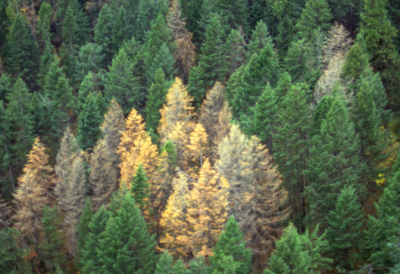Native to Colorado, the fir engraver beetle attacks and kills all trees that are part of the fir species. They are extremely common across the western parts of North America, where they live within their host trees for feeding and reproduction.
their host trees for feeding and reproduction.
It is possible for entire trees and surrounding ones to die entirely. However, in some cases only the tops or individual branches will die. Extensive problems occur when there has been extreme snowfall and temperatures, as the beetles will burrow for warmth and protection.
The fir engraver beetles reproduce once a year, although it can take two years in the colder climates. Between June and September, the adults will leave the host tree and find another place to burrow. The females start the work on creating the homes within the bark trees, and the males will follow to mate. The main tree system is used for creating the egg gallery after mating.
It’s possible for one female to deposit between 50 and 300 eggs into a gallery. Within 9 and 14 days, the eggs will hatch into larvae, and they feed on the tree to gain nutrients to grow into adults. Depending on the nutrients and temperatures, some beetles will feed for just 40 days and others for as long as 380 days!
They eventually develop into young adults, around the size of a grain of rice with a shiny brown/black covering.
It is difficult to know if you have an infestation right away. There are some symptoms that you can look out for, but you may need a tree surgeon to help assess the damage.
One of the clearest signs you’ll notice is the coloring of the firs from a blue/green color to light orange. There may be red/brown holes around parts of the tree, where the beetles have burrowed their way in. It is also possible to see streams of resin flow from the holes, which can look a little like candle wax.
Look out for signs of infestation. Fir engraver beetles will move on to other trees and need to be managed as soon as possible. Call SprayTech, tree spraying experts, at 720.248.0000.
Comments are closed.